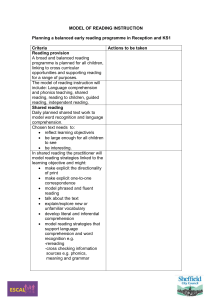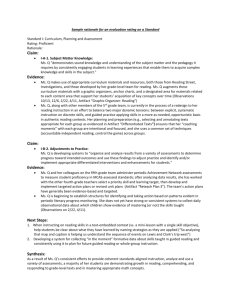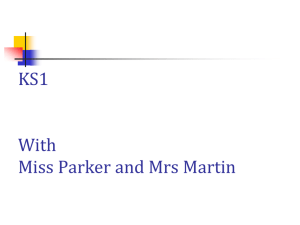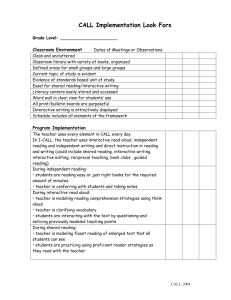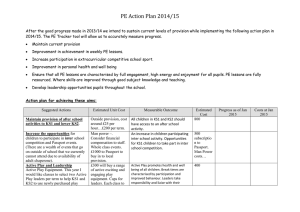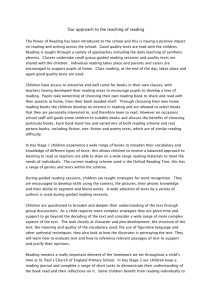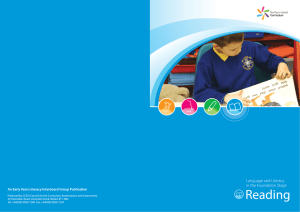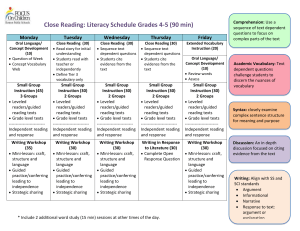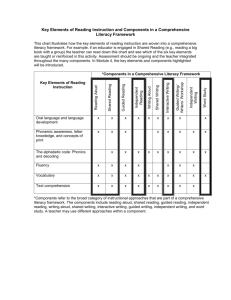Session 7: Staff meeting: planning an additional reading session
advertisement
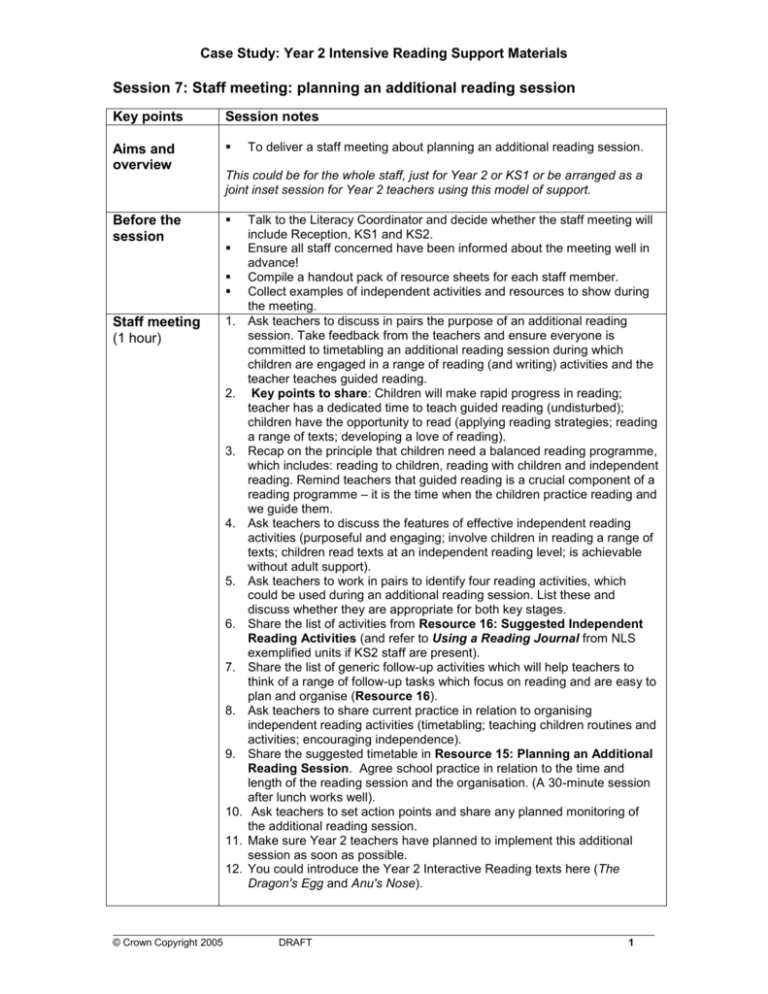
Case Study: Year 2 Intensive Reading Support Materials Session 7: Staff meeting: planning an additional reading session Key points Session notes Aims and overview Before the session This could be for the whole staff, just for Year 2 or KS1 or be arranged as a joint inset session for Year 2 teachers using this model of support. Staff meeting (1 hour) 1. 2. 3. 4. 5. 6. 7. 8. 9. 10. 11. 12. © Crown Copyright 2005 To deliver a staff meeting about planning an additional reading session. Talk to the Literacy Coordinator and decide whether the staff meeting will include Reception, KS1 and KS2. Ensure all staff concerned have been informed about the meeting well in advance! Compile a handout pack of resource sheets for each staff member. Collect examples of independent activities and resources to show during the meeting. Ask teachers to discuss in pairs the purpose of an additional reading session. Take feedback from the teachers and ensure everyone is committed to timetabling an additional reading session during which children are engaged in a range of reading (and writing) activities and the teacher teaches guided reading. Key points to share: Children will make rapid progress in reading; teacher has a dedicated time to teach guided reading (undisturbed); children have the opportunity to read (applying reading strategies; reading a range of texts; developing a love of reading). Recap on the principle that children need a balanced reading programme, which includes: reading to children, reading with children and independent reading. Remind teachers that guided reading is a crucial component of a reading programme – it is the time when the children practice reading and we guide them. Ask teachers to discuss the features of effective independent reading activities (purposeful and engaging; involve children in reading a range of texts; children read texts at an independent reading level; is achievable without adult support). Ask teachers to work in pairs to identify four reading activities, which could be used during an additional reading session. List these and discuss whether they are appropriate for both key stages. Share the list of activities from Resource 16: Suggested Independent Reading Activities (and refer to Using a Reading Journal from NLS exemplified units if KS2 staff are present). Share the list of generic follow-up activities which will help teachers to think of a range of follow-up tasks which focus on reading and are easy to plan and organise (Resource 16). Ask teachers to share current practice in relation to organising independent reading activities (timetabling; teaching children routines and activities; encouraging independence). Share the suggested timetable in Resource 15: Planning an Additional Reading Session. Agree school practice in relation to the time and length of the reading session and the organisation. (A 30-minute session after lunch works well). Ask teachers to set action points and share any planned monitoring of the additional reading session. Make sure Year 2 teachers have planned to implement this additional session as soon as possible. You could introduce the Year 2 Interactive Reading texts here (The Dragon's Egg and Anu's Nose). DRAFT 1 Case Study: Year 2 Intensive Reading Support Materials Additional notes Resources The staff meeting date will need to be negotiated with the school and does not necessarily need to take place on Day 3 Teachers often find it useful to take photos of their children doing independent activities to use on task boards. Resource 15: Planning an Additional Reading Session Resource 16: Suggested Independent Reading Activities Book Bands for Guided Reading (pages 2-3) gives an overview of distinctions between shared, guided and independent reading. Personnel © Crown Copyright 2005 Literacy Consultant Staff from Reception/KS1/ KS2 as agreed with HT and Literacy Coordinator DRAFT 2
